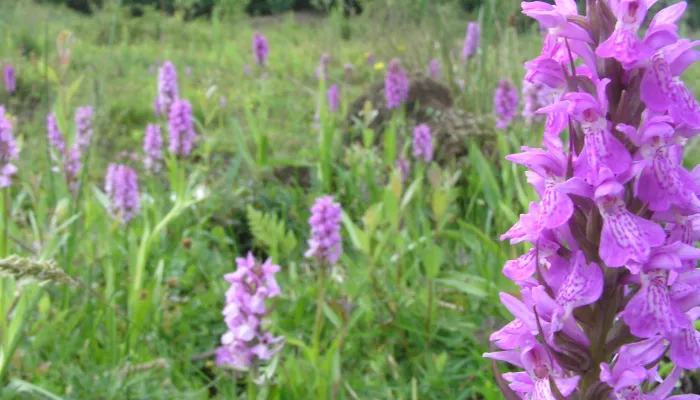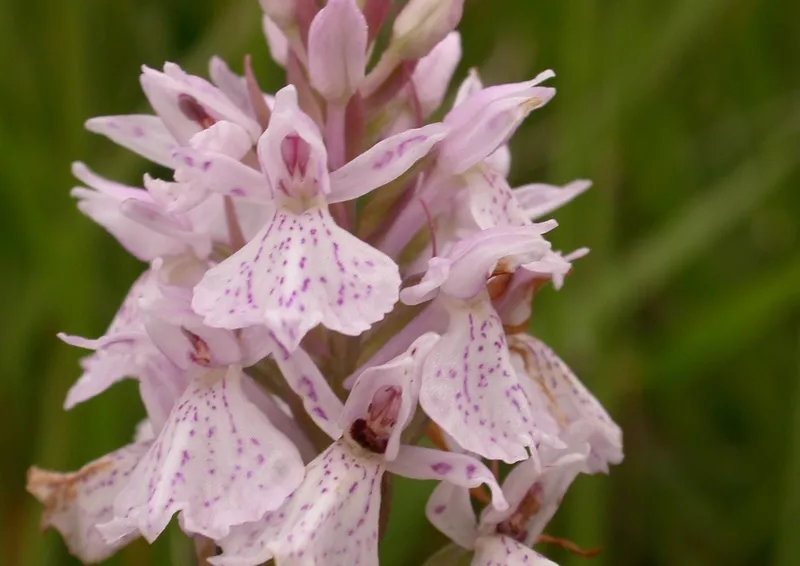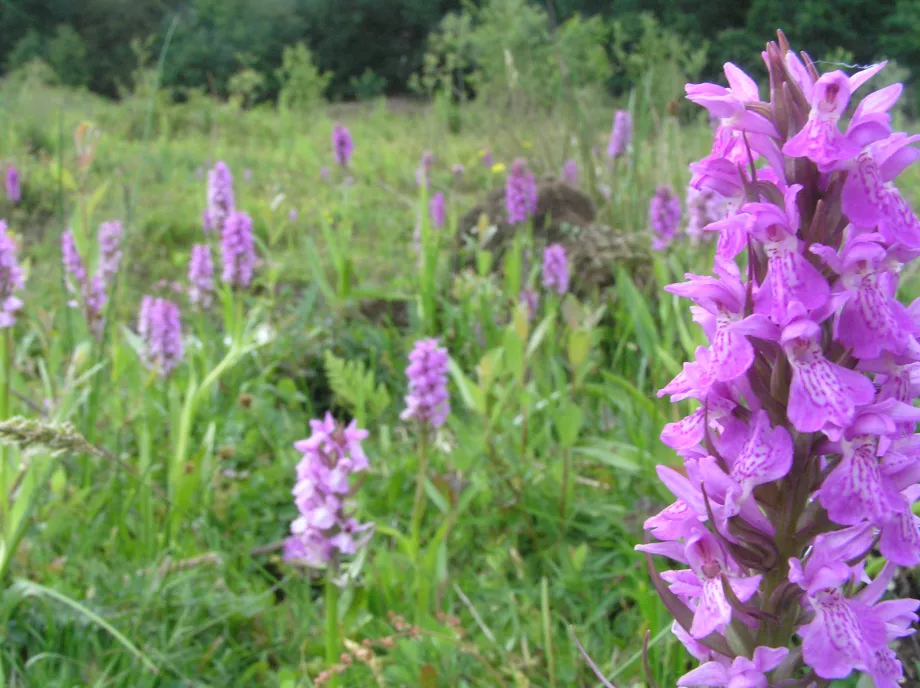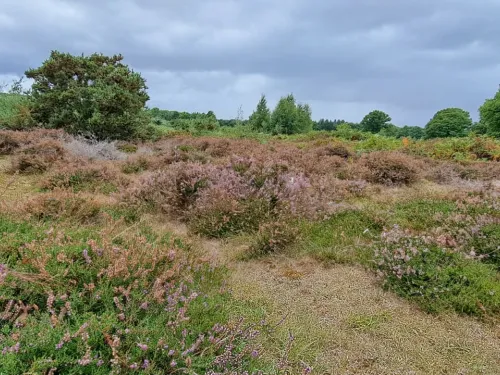The Southern marsh orchid, Dactylorhiza praetermissa, grows in the lower bog where conditions are slightly less acid. Here it can grow to 50cm, a sturdy plant with the bright purplish-pink boldly marked flowers crowded in a spike on the top fifth of the stem. Like many orchids it can vary in colour intensity and flower markings and shape. It hybridizes easily with the spotted orchids, leading to even more variations. It occurs south of the Ribble/Humber and from Northern France to Norway, and was only recognised as a separate species in 1914, hence praetermissa, meaning overlooked. It is pollinated by insects and butterflies. Both species survive in poor soil thanks to a highly specialised parasitic relationship with mycorrhizal fungi which supply nutrients but receive nothing from the orchid. Both produce large quantities of dust-like seed which is scattered on the wind and able to float on water. The fungi are essential to feed the minute seed as it germinates and develops underground.
These orchids are locally common, but dwindling as habitats are enriched by fertiliser, car emissions etc. or lost to development. Several orchid species occur in the Hothfield/Westwell area, often in unexpected places, including former industrial sites and the verges of busy roads. Leaving wild areas in gardens and clearing overgrown scrub without increasing soil nutrient levels can encourage seed to germinate or dormant plants to emerge, along with other treasures, such as cowslips. The orchids close to Down House in Cudham Valley led Charles Darwin to exhaustively investigate ‘the many beautiful contrivances’ of complex orchid flowers to enable cross-pollination to increase the gene pool and thereby ensure the adaptability and flexibility necessary for the survival of each species.






